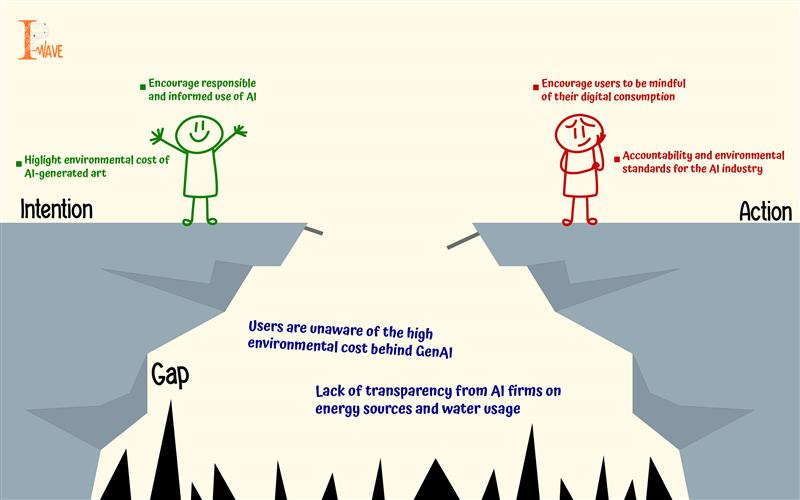Ghibli-fication: What AI Art Cost The Earth?
Studio Ghibli has been adored for decades by animation fans for its pastel watercolor backgrounds, emotive characters, and magical stories. But now, thanks to an AI craze, anyone with an internet connection can transform their photos into Ghibli-like dreamworlds with just one command. Sounds magical, doesn’t it? Until you realise this digital enchantment comes at a steep, often invisible cost often paid by the planet in carbon, water, and ecological strain.
It all started when OpenAI rolled out a powerful new image-generation tool as part of its GPT-4o upgrade. While the AI could produce visuals in various styles, the Studio Ghibli aesthetic quickly rose to the top. With a click and a prompt, users could “Ghibli-fy” everything from selfies to memes to movie stills. Social media turned into a swirling mosaic of dreamy, pastel-like scenes, and even OpenAI’s CEO Sam Altman joined the fun, swapping his profile picture for a Ghibli-styled version.
This might seem like harmless fun. But when one million people jump on the bandwagon in a single hour when the feature went live, the consequences starts to ripple outward, far beyond the digital screen.
Creating AI images takes much more energy than writing text, with an individual image taking up roughly 1 trillion FLOPs, ten times the amount of a typical text response. This heavy-duty computation is dependent on GPUs, which, when under heavy load, can use as much as 700 watts. Diffusion models, which are frequently applied to image generation, undertake several steps of refinement, boosting energy consumption. Estimates indicate that a single image takes about 3.25 watt-hours of total energy, including cooling which is about the same as lighting a 60-watt bulb for three minutes or charging a phone halfway. With millions of users generating images every day, the energy effect quickly mounts up.
Then comes the carbon footprint. Creating one AI image emits 5 to 50 grams of carbon dioxide. Imagin the same for 3 million daily images, that’s 1.35 metric tonnes of CO₂, the equivalent of driving a petrol car for 5,000 kilometers or streaming 110,000 hours of Netflix. And that's just for Ghibli-fied images. The entire AI industry’s emissions, if unchecked, could soon compete with the aviation sector.
The water problem is even more disturbing than the carbon story. According to researchers from the University of California, Riverside, and the University of Texas at Arlington, training large language models like GPT-3 can require up to 5.4 million litres of water. This covers both server cooling and the hidden water consumption from electricity generation, much of which comes from thermoelectric power plants that gulp freshwater in the process. Others consume electricity produced by steam turbines, which also need water. Even the manufacturing of AI chips and servers depends on ultra-pure water in highly polluting processes.
If AI adoption continues to grow at this rate, global water consumption by AI could hit 6.6 billion cubic metres annually by 2027. That’s about the total annual water use of six countries the size of
Denmark. In a world where prolonged droughts and water scarcity are already threatening food security and political stability, this is not just an environmental issue, it’s a humanitarian one.
The effect is focused on a few places where data centres run 24/7, amplifying the pressure on local water resources. Despite all that, AI model water footprints are still tightly under wraps. Firms like OpenAI haven't said if their operations consume renewable power or dry cooling technology, so users and regulators have no idea.
There’s something deeply ironic about this. Studio Ghibli's films have always celebrated nature, depicting lush forests, wild creatures, and the deep interconnection between humans and the environment. Yet, the viral AI trend based on Ghibli’s visual style is now threatening the very natural world those films cherished.
This isn’t to say we should stop using AI or outlaw digital art. But when a trend as seemingly innocent as Ghibli-fication scales to millions of users, the cumulative cost cannot be brushed aside. We need more transparency from AI companies, sustainable cooling systems, and a commitment to clean energy transitions.
Perhaps the lesson here is not to stop marvelling at AI's capabilities, but to marvel with a sense of responsibility. Clicking “generate” may feel like a small act, but sometimes small acts cause adverse consequences. The Ghibli world might be magical, but the real world is what we have to live in.
So the next time you’re tempted to turn your vacation picture into a Ghibli character, pause and think is it worth a few more degrees on an already warming planet?


